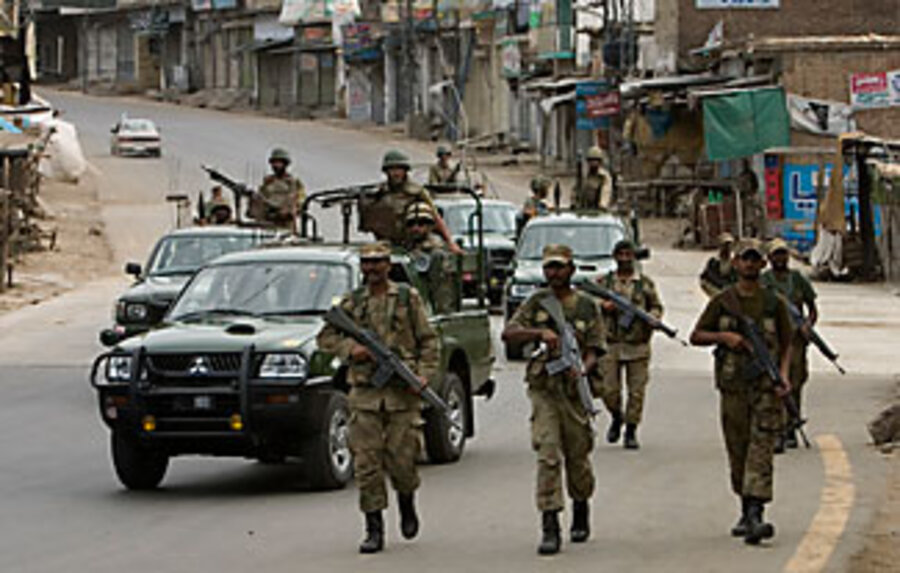Pakistan begins returning Swat Valley refugees home
Loading...
| Washington
Pakistan on Monday began returning more than 2 million refugees who were displaced by a government offensive against Taliban elements to the Swat Valley. The process will be closely watched by foreign governments, including in the United States, for signs of Pakistan's ability to reverse a growing Islamist militancy.
The Pakistani government has deemed the region stabilized, and most residents, especially the 300,000 who have been living in makeshift camps for more than two months, appear anxious to go home.
But some Southeast Asia analysts and humanitarian-aid experts say that Pakistan's heavily centralized government is unprepared for the massive return and could yet lose the crucial "hearts and minds" battle with extremist forces – especially if the delivery of services is no better than before the Taliban's seizure of the region.
"The Pakistani government does not have a good track record when it comes to returning displaced populations, so this will be an important test," says Patrick Duplat, a services advocate with Refugees International in Washington. "If they once again send families back to areas that remain insecure and lack basic government services, the door will be open to more of the loss of public confidence that is so important for the government."
The question of the public's confidence in the Pakistani government is of keen interest to the US, which is a key supporter of the government of President Asif Ali Zardari in its battle with expanding Islamic extremism. The US under President Obama has sought to shift its massive Pakistan assistance away from the military toward more development and "people-oriented" activities.
The specter of a nuclear-armed Pakistan destabilized by Islamist extremists who are allied with their brethren next door in Afghanistan prompted the US to encourage the government's offensive in Swat in the first place.
That gives the US not just an interest in seeing the Pakistani government succeed with its own people, but a "special responsibility" in assisting with a successful refugee return process, Mr. Duplat says. He notes that after a similar displacement of residents in the northwest tribal areas last fall was followed by a "hasty" and "poorly planned" return, the same residents had to flee their homes a second time – a disruption that resulted in a precipitous loss of faith in the government.
Still, the Pakistani government may have reason to be more successful in the case of the Swat Valley. For one thing, Swat, which is north of the capital of Islamabad, is a long-settled area as opposed to the remote and semiautonomous tribal areas. "So there's reason for a certain amount of confidence that the government has a good read on the region," says Lisa Curtis, a South Asia expert with the Heritage Foundation in Washington.
Another reason is simply the Pakistani military's newfound determination to take on extremist elements, Ms. Curtis says. She cites what she calls "surprising statements" from Pakistani military and civilian leaders in recent days that suggest the country is viewing militant groups like the Taliban as the principal threat to its stability and security.





